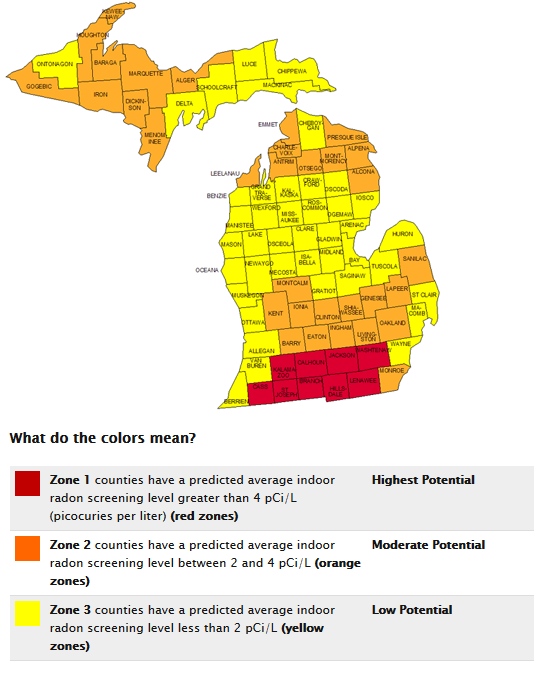What is Radon?
Radon is a cancer-causing, radioactive gas. You can’t see radon. And you can’t smell it or taste it. But it may be a problem in your home.
Radon is estimated to cause many thousands of deaths each year. That’s because when you breathe air containing radon, you can get lung cancer. In fact, the Surgeon General has warned that radon is the second leading cause of lung cancer in the United States today. Only smoking causes more lung cancer deaths. If you smoke and your home has high radon levels, your risk of lung cancer is especially high.
Radon can be found all over the U.S.
Radon comes from the natural (radioactive) breakdown of uranium in soil, rock and water and gets into the air you breathe. Radon can be found all over the U.S. It can get into any type of building — homes, offices, and schools — and result in a high indoor radon level. But you and your family are most likely to get your greatest exposure at home, where you spend most of your time.
Is Radon in Michigan?
Radon can occur anywhere. The EPA and the State of Michigan have created a Radon Zone Map to indicate the potential for radon in your area.
Regardless of where you live, you should test for radon.
Testing is the only way to know if you and your family are at risk from radon. EPA and the Surgeon General recommend testing all homes below the third floor for radon
Testing is inexpensive and easy — it should only take a few minutes of your time. Millions of Americans have already tested their homes for radon. Mail-in DIY test kits are available at major home improvement and hardware stores. Prices range from $12-25 and usually include the lab fees.
You can fix a radon problem.
Radon reduction systems work and they are not too costly. Some radon reduction systems can reduce radon levels in your home by up to 99%. Even very high levels can be reduced to acceptable levels.

